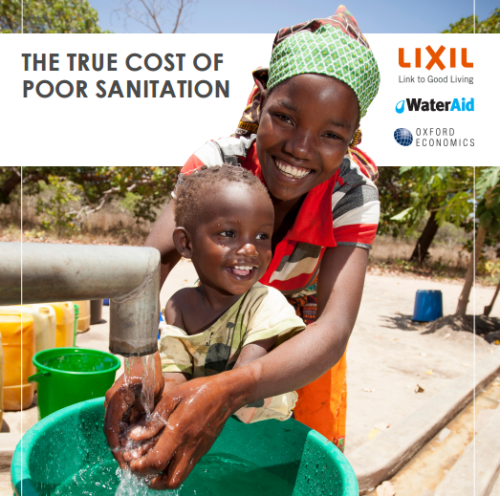
Lack of access to sanitation cost the global economy US$222.9 billion in 2015, up from US$182.5 billion in 2010, a rise of 22% in just five years, according to a new report released on 25 August 2016 by LIXIL Group Corporation (“LIXIL Group”), a global leader in housing and building materials, products and services.
The true cost of poor sanitation, published in collaboration with WaterAid and Oxford Economics, which conducted economic modeling to develop up-to-date estimations of the global cost of poor sanitation, brings to light the high economic burden in low-income and lower-middle income countries.
More than half (55%) of all costs of poor sanitation are a consequence of premature deaths, rising to 75% in Africa. A further quarter are due to treating related diseases, and other costs are related to lower productivity as a result of illnesses and time lost due to lack of access to a private toilet.

Infographic from “The True Cost of Poor Sanitation”
Regionally, in terms of total US dollar value, the economic burden of poor sanitation is heaviest in Asia Pacific, which is accountable for a cost of US$ 172.3 billion, over three quarters of the total amount. Latin America and the Caribbean, and Africa account for approximately 10% of the global cost each. On a national level, in terms of total cost, India suffers by far the most, with US$106.7 billion wiped off GDP in 2015, almost half of the total global losses, and 5.2% of the nation’s GDP.
The research underlines the terrible toll poor sanitation is taking in Africa, where the costs stood at US$19.3 billion in 2015, an increase of 24.5% from US$15.5 billion in 2010. These costs were equivalent to 0.9% of GDP, higher than the global (ex-India) average. In terms of cost as a share of GDP, the top 10 most impacted countries were concentrated in Sub-Saharan Africa and South Asia.
The report identifies three priority areas that will be key in ensuring sustainable sanitation solutions for all:
- Political will and action: The Millennium Development Goal (MDG) for sanitation was the most off track. Governments should commit to a national strategy on sanitation to meet the target set out in the Sustainable Development Goals (SDG6).
- Innovative solutions: Sanitation systems in the developed world require vast amounts of land, energy, and water. They are expensive to build, maintain and operate. Innovation is key to solving the sanitation crisis.
- Cross-sector collaboration: Providing sanitation solutions for low income consumers is a complex challenge. It is important to build partnerships across public and private sectors and civil society. Knowledge sharing, new technologies and innovation in delivery models are needed to address the sanitation challenge.
Read the full press release.
Lixil, WaterAid Japan & Oxford Economics, 2016. The true cost of poor sanitation. Tokyo, Japan: Lixil. 13 p. fig., photogr. Download the full report
